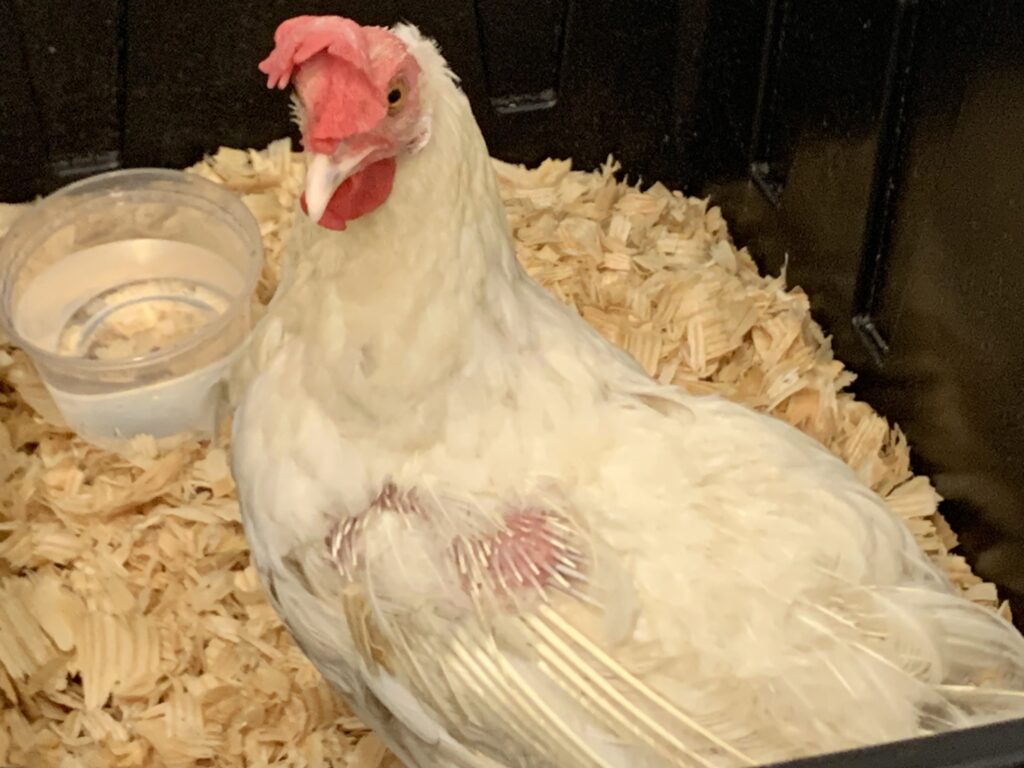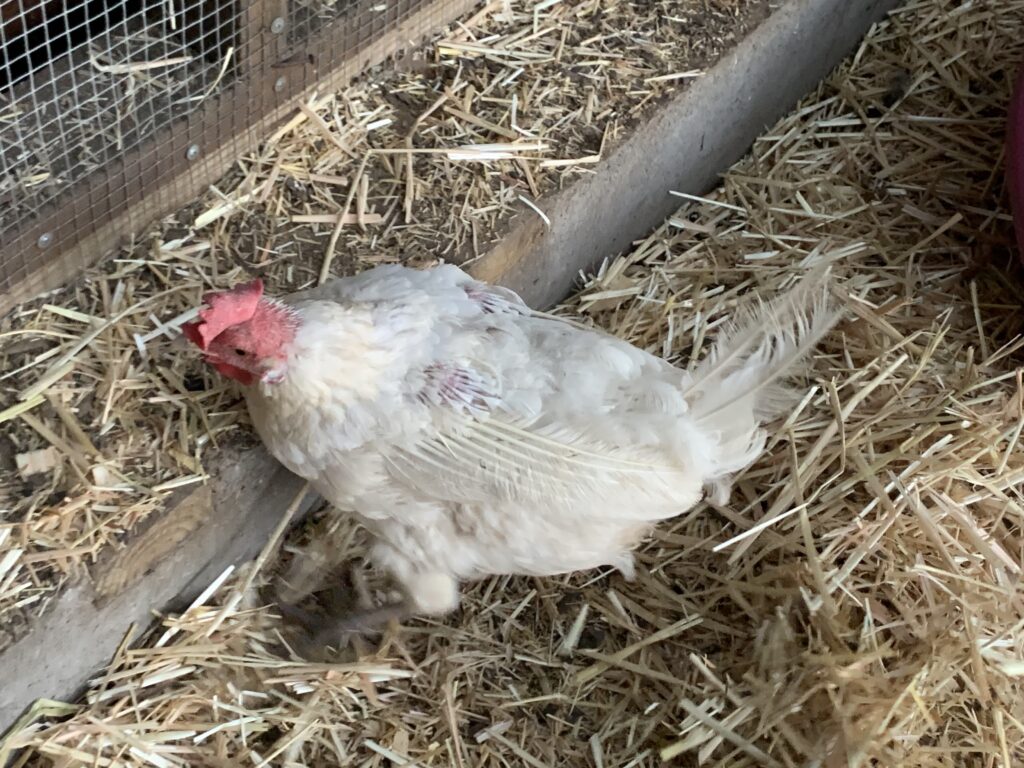Chicken Molting Season is Here! What Can Chicken Keepers Do To Help Their Flock?

Purchasing items through the links provided in my blog is a way to help me earn a small commission at no extra cost to you. Thanks for your interest and support!
What is molting?
Molting is a natural process chickens go through yearly to shed their old feathers and grow new ones. It happens during the fall season, when daylight hours are reduced and days are shorter.
In North Texas, my chickens tend to start shedding their feathers starting sometime between the end of October to early November depending on the weather changes. A molt can lasts anywhere from 8-16 weeks depending on each individual chicken.
Why do chickens molt?
Chickens molt their old feathers to make space for new ones. Molting is important for a chicken’s health. It’s an essential natural process in a chickens life to replace damaged feathers with new ones in order to help them keep warm during the coldest months.
Days are shorter during the winter so there is less warmth from sunlight and chickens rely on their full set of feathers to trap in warm air and remain as comfortable as possible.

How long will molting take?
Just like humans are different, chickens are all different as well. The chicken’s breed, age, diet, daylight and cooler weather are all factors that can have an affect on their molt.
The timing can range anywhere from 8 to 16 weeks. Some chickens will show the molt significantly, while others wont.
What factors have an affect on molting?
Breed
Good laying chicken breeds tend to molt very quickly (taking only 12 weeks or so), and shed feathers in huge chunks. These breeds show a significant lose of feathers at once and tend to be at more pain during the process of regrowing their new feathers.
On the contrary, poor laying chicken breeds will draw the molt out longer, up to 4 months or longer. These breeds hardly show any signs of molting, since they only lose a few feathers at a time.
Age
As humans age, our body takes longer to heal and recover. Same with chickens, the oldies will molt slower than younger ones. Younger hens can recover quicker form a hard molt without a doubt!
Diet
Nutrition affects molting chickens the most. Without a higher intake of protein, regrowing brand new feathers will be challenging. So much that chickens can lose alot of body weight during the process and completely stop laying eggs.
Daylight
Less daylight equals shorter days! In North Texas, the sun sets around 6pm in November. As mentioned before, shorter days trigger the chickens internal clock to start molting and getting their feathers ready for the colder days.
Cooler weather
Cooler weather can also trigger chickens to shed their feathers quicker. Their bodies need to be prepared for winter. Its all part of their instinct! This can literally start happening from one day to the next. All of a sudden you have a bunch of feathers everywhere in the chicken run, making you wonder if everyone is alive and playing nice.

Do chickens lay eggs while molting?
Molting takes alot of nutrients and energy away from your chickens and so does egg laying. Their body can only have enough energy and nutrients for one of those jobs so molting will take first place.
It’s important for your hens to regrow their feathers so egg laying will completely take a hit or be very limited and you wont have those yummy eggs for breakfast. Laying hens will not resume laying eggs daily until they are completely done molting and regrowing their new feathers.
Do roosters molt as well?
Yes! Just as hens do, roosters will also molt. This can take a toll on their body weight and fertility so it’s important to keep them well fed with the proper nutrients during the process. If not, your rooster can be left sterile if he loses too much weight.

Can chicken keepers help during the molting process?
Absolutely! Chicken keepers can help their flock during the molting process by providing the correct nutrients. Chickens need a higher protein diet during their molt to grow new feathers.
Feathers are made up of 90% keratin, a fibrous protein also found in nails, hair, hooves, and horns. As a result, growing feathers also requires an increase of protein in the chicken’s diet.
During the winter months, natural bugs are scarcly available to foraging chickens so it’s important to be prepared to find options within your budget especially if you have a large flock.
Good sources of protein include but are not limited to dried soldier fly larvae, dried meal worms, black oil sunflower seeds, scrambled eggs, canned tuna, canned sardines, meat scraps, and alfalfa hay.
You can easily find items at grocery stores, big box member stores like Costco and Sam’s Club, Tractor Supply, and online shops like Amazon who convinently deliver for free if you are a prime member. Do a little research and see what options are good for your hens and your budget.

Limit molting pain
Ok, so not all molting pain can be avoided but it can definitely be limited. Chickens that molt drastically will have the most pain because all the feathers will be coming out at once. Being mindful of their pain will help us remember not to cuddle too much with our molting chickens. Carrying them can be uncomfortable to them.
If you have children, remind them that not carrying the chickens during their molt is a loving act on their part and that they can avoid them much pain by waiting for their full feathers to completely come out.
Conclusion
As chicken keepers, we are always on the look out to helping our chickens be healthy and stay healthy! Providing the proper care and nutrition for our flock during their molt is essential to extending their health and their live!
Resources & Recommended Reading
Personal Experience & Research
Books
Fresh Eggs Daily: Raising happy, healthy chickens…naturally by Lisa Steele
